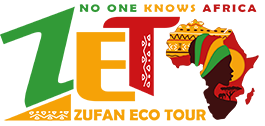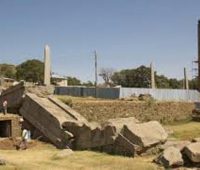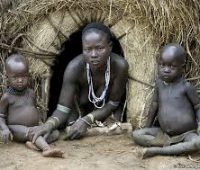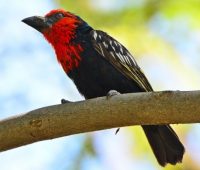ethiopia
EXPERIENCE MAGNIFICENT ETHIOPIA
Government
Ethiopia is a Federal Democratic Republic made up of 9 regions, mainly based on ethnicity. The present government was reelected in May 2013G. C. for a 5 year term.
Economy
About 85% of the population earns their living from the land, mainly as subsistence farmers. Agriculture is the backbone of the national economy and the principal exports from this sector are coffee, oil seeds, pulses, flowers, vegetables, sugar and foodstuffs for animals. There is also a thriving livestock sector. Ethiopia has the largest domestic livestock population in Africa. Ethiopia exports cattle on the hoof and hides and skins.
The export of chat, oil seeds, pulses and animal feed makes up the rest of Ethiopia’s foreign currency earnings, with tourism set to make an increasingly important contribution.
Ethiopia is the “water tower” of the region. Blue Nile contributes to 85% of the main Nile flow. Hence, projects are now being implemented to better exploit the country’s water resources both for power generation and agricultural production. Mineral exploration has stepped up in recent years. There are reserves of oil, natural gas, coal, gold, copper, tantalum, potash, zinc, iron ore, nickel, marble, precious and semi-precious stones. Thermal power generation schemes are already operational in Afar and Oromo Regions.
Climate
Ethiopia have two main seasons. The dry season prevails from October through May. While the wet season runs from June to September. Temperatures are determined by altitude, with highlands rarely exceeding 25ºC. In the lowlands it can get considerably hotter exceeding 40ºC. For that reason the Danakil Depression can approach up ot 60ºC.
Ethiopian Calendar and Time
The Ethiopian calendar is much more similar to the Egyptian Coptic calendar. Unlikely Ethiopia have a year of 13 months, 365 days and 366 days in a leap year. It is much influenced by the Ethiopian Orthodox Tewahedo Church, which follows its ancient calendar rules and beliefs. The Ethiopian calendar is always seven years and eight months behind the Gregorian. Therefore, Ethiopians had celebrated the new millennium on September 1, 2000 Ethiopian calendar. Hence it was on September 12, 2007 in Gregorian calendar.
Pope Gregory XIII reformed the Julian calendar due to the fact that Easter was drifting away from its springtime origins and so lost its relation with the Jewish Passover. Since 1582, the Gregorian (Western) calendar has become the religious, cultural and civil calendar for most of the world. Because of the ideological differences, the Eastern Orthodox Churches and Ethiopian Orthodox Tewahedo Church did not accept the Gregorian calendar and continued to use the Julian calendar with lunar tables for calculating Easter, together with other religious and cultural holidays.
The date of Christmas in the Ethiopian calendar always falls on December 29, but this date is January 7 in the Gregorian calendar i.e. 13 days after the Roman Catholic and Protestant Churches have celebrated their Christmas. However, the date of Easter in the Eastern, Coptic and Ethiopian Orthodox Tewahedo Churches’ calendars falls 7 days after the Jewish Passover which date determines the Roman Catholic and Protestant Churches’ Easter.
Although the Julian, Gregorian, Coptic and Ethiopian calendars have the same number of days in a year, (365 days and 366 days in a leap year), the counting systems giving the number of days in each month, and number of months in a year, of the Julian and Gregorian calendars differ from the Ethiopian and Egyptian Coptic calendars. The Ethiopian and Coptic calendars consist of 13 months where the first 12 months have 30 days each, and the Last (thirteenth) month has 5 days (6 days in a leap year). The Gregorian calendar consists of 12 months with January, March, May, July, August, October and December having 31 days, April, June, September and November, 30 days and February having 28 days (29 days in a leap year).
The Ethiopian New Year falls on September 11 (September 12 in the leap year) in the Gregorian calendar but it is September 1 in the Ethiopian calendar. In Ethiopia the first month of the year is September and the last (thirteenth) month of the year is Pagumiene, which comes after August. Each month has 30 days (from September to August) and the thirteenth month, Pagumiene, has 5 days (6 days in a leap year).
Ethiopia is in the GMT + 3 hours time zone. Ethiopia follows the Julian calendar, which consists of twelve months of 30 days each and a thirteenth month of five or six days.
Clothing
In general between seasons clothes are appropriate. At higher altitudes, woolen clothes or a coat are needed in the evenings. Travelers should take rain coat or other rainwear, particularly when visiting the country during the period from February to October. It is usually possible to have clothes laundered at or near hotels within a short period of time (frequently services are offered 24 hours a day).
Health requirements
Prior to entry, visitors should be in possession of a valid health certificate for yellow fever. Vaccination against cholera is also required for any person who has visited or transited a cholera-infected area within six days prior to arrival in Ethiopia.
Population
The current population is about 90 million, making it the second most populated country in Africa. Over 50% of who are under 20 years old. The average number of inhabitants per square kilometer is 49. The ancient Ethiopians were of Hamitic stock who later intermingled with Sematic immigrants from Southern Arabia.
Language
Ethiopia is a multi-ethnic state with a great variety of languages spoken in the country, of which there are 83 with 200 dialects. The main three languages are Amharic, Tigrigna and Oromigna. English is also widely spoken.
Ethiopia visa
All foreign nationals, except those of Kenya and Djibouti, cannot enter Ethiopia without a valid visa. However, nationals of the following countries can obtain their visas at the airport of entry on arrival: Argentina, Australia, Austria, Belgium, Brazil, Canada, China, Czech Republic, Denmark, Finland, France, Germany, Greece, India, Ireland, Israel, Italy, Japan, Korea Republic, Kuwait, Luxembourg, Mexico, Netherlands, New Zealand, Norway, Poland, Portugal, Russian Federation, Slovak Republic, South Africa, South Korea, Spain, Sweden, Switzerland, United Kingdom and United States of America. All other foreign nationals will have to obtain their valid visas from Ethiopian diplomatic missions accessible to them. Passengers in transit in Ethiopia, holding confirmed onward bookings, can obtain transit visas within 72 hours.
Security
Ethiopia is generally a safe country, and Addis Ababa a safe capital city. Generally visitors can tour the city day and night in safety.
Currency
The local currency is the Ethiopian Birr (ETB), made up of 100 cents. Birr notes are available in denominations of 5, 10, 50 and 100. Visitors may import an unlimited amount of foreign currency but this must be declared on arrival to the customs authorities on the appropriate blue-colored form.
Foreign currency may only be exchanged at authorized banks and hotels, and a receipt must be obtained. The currency declaration form must be retained as this will be required by customs on departure. Visitors may change back any surplus Ethiopian Birr to cash at the airport before departure.
In addition to any Ethiopian Birr, along with the currency exchange form you must bring with you all receipts for exchange transactions.
Currency Importing:
Local currency (ETB) up to ETB 10.00 per person. Foreign currencies are unlimited, provided declaration is made to the customs on arrival.
Currency regulations and Currency Exporting:
Allowed; local currency (ETB), provided passengers holds a re-entry permit ETB 10.00 per person. Foreign currencies up to the amounts imported and declared.
Ethiopia custom
All visitors should declare electronic goods, and mobile apparatus. They will be required to show the declaration paper upon departure, in order for them to take back their equipment.
Duty-free import is permitted up to:
- a) 200 cigarettes, or 50 cigars, or ½ lb of tobacco,
- b) 2 liter of alcoholic beverages,
c) ½ liter, or two bottles, of perfumes,
Visitors may export souvenirs, although some Articles (such as animal skins and antiques) which require an export permit.
Ethiopia is in the race to become the first sub-Saharan country after South Africa to lay down an electrified rail network that will link 49 towns and cities.
It has already completed one of sub-Saharan Africa’s first light rail mass transit systems, in the capital, Addis Ababa.
The country-wide scheme is part of a grand experiment in nation building through infrastructure that was launched by the regime of the late Meles Zenawi and is being continued by his Ethiopian People’s Revolutionary Democratic Front party under the leadership of the Prime Minister, Hailemariam Desalegn.
The blueprint for Ethiopia’s modernization is contained in its five-year Growth and Development Plan. The two main elements are an increase in agricultural output to earn export revenue and to prevent a recurrence of the famines of the 1980s, and the construction of modern power and transport systems.
The goals of the infrastructure programs are to increase generating capacity fourfold to 10GW, to construct 16,000km of paved roads and to lay 2,500km of standard gauge electrified rail track – a target that was later increased to about 5,000km.
There is a good deal of interdependence among these aims: for instance, the plan to build an electrified network depends on schemes such as the Grand Ethiopian Renaissance Dam to supply the necessary power.
In 2010, when the present five-year plan was launched, the stated aim was to increase freight capacity by at least five million tons. The cost of constructing the network was put at about $2.5bn over seven years. Both of the productivity and the cost have since risen dramatically.
Topography
Ethiopia has an elevated central plateau varying in height between 2,000 and 3,000 meters. In the North and centre of the country there are some 25 mountains whose peaks rise over 4,000 meters. The most famous Ethiopian river is the Blue Nile (or Abay), which runs a distance of 1,450 kilometers from its source in Lake Tana, to join the White Nile at Khartoum.
Land
Ethiopia, as large as France and Spain combined, has an area of 1.14 million square kilometers (944,000 square miles). About 65% of the land is arable, with 15% presently cultivated. From the North and running down the centre are the Abyssinian highlands, to the west of the chain the land drops to the grasslands of Sudan, to the East to the deserts of the Afar. South of Addis Ababa the land is dominated by the Rift Valley Lakes. The main rivers are the Blue Nile, the Tekezze, the Awash, the Wabe Shabele, the Omo, and the Baro.
Excursions
Excursions within Ethiopia, whether for a day or for a month, may be organized for you by any of the travel agencies or by the National Tour Operation.
Hotels
Addis Ababa has Hotels that cater for all pockets, from the luxurious Sheraton and Hilton hotels to the tourist-class hotels such as the Ghion, Ethiopia and the Wabi Shebelle. All tourist resorts offer a choice of Modern Hotels
Shopping Hours
Shops are open Monday to Friday 8:00am-12:00pm and 1:00pm-very flexible, often longer opening hours; some shops are also open on Saturday. These days a few supermarkets and beauty salons in the capital are working 24 hours.
Courier and Money Transfer Services
Money transfers can be made through Western Union and Money Gram. Both have representative branches in Addis Ababa and also make their services available from private and national banks.
Four courier service providers DHL, FedEx, UPS, TNT and EMS have offices in Addis Ababa.
Transport
Roads: There are about 4,100 kilometers of asphalt roads with a further 19,000 kilometers of gravel and dry-weather roads.
Railway: A 778-kilometre long railway line links Addis Ababa with Djibouti, and carries both freight and passengers.
Air: Ethiopian Airlines has an extensive domestic network flying to 43 airfields and an additional 21 landing strips.
Electric supply
Ethiopia uses 220 volts 50 cycles AC.
Ethiopia postal service
Ethiopian Postal Service is the company responsible for postal service in Ethiopia. Prior to the admission of Ethiopia to the UPU in 1908, international mail from Ethiopia had to be additionally franked with stamps of UPU members. France operated post offices at Addis Ababa, Harar, and Dire Dawa, using stamps of Obock or the French Somali Coast, and mail is known with a triple franking of Ethiopia, British Somaliland (via the town of Zeila), and Aden.
With an area of 1.1 million sq.km and a population of 90 million, Ethiopia has at present 1139 post offices. Out of this 746 Permanent post offices, 130 Departmental sub-post offices, 261 Sub-post offices and 2 Visiting postmen in rural areas and over 170000 post boxes. It is estimated that one post office is serving 79016 inhabitants while one private box serves 529 people.
Telecommunications
Ethio Telecom has launched the Fourth Generation (4G) Long-Term Evolution (LTE) service on March 21st 2015 in line with the company’s commitment to avail modern and state of the art technologies to its entire customers.
Dear customers, Ethio Telecom is delighted to offer you a free 3G upgrading opportunity!
From January 1 to June 30, 2015, Customers who are residing in areas where Ethio Telecom completed its 3G network expansion project can upgrade their SIM from 2G to 3G service by sending SMS text “3G” to a free SMS line 825.
To get the service, there is no need to visit Ethio Telecom shops or pay additional subscription fee.
Banking hours
Banking hours are usually from 8:00 am – 4:00 pm from Monday to Friday and from 8:00 am – 11:00 am on Saturdays. Closing times may be an hour longer in some private banks. Most banks work through lunchtime; however foreign exchange services are closed during lunch hours (12:00 noon – 1:00 pm). ATM is 24 Hrs service.
Visas are required for all foreign visitors to Ethiopia, with the exception of nationals of Kenya and the Sudan. Visa applications may be obtained at Ethiopia’s diplomatic missions overseas. However, nationals of 33 countries are now allowed to receive their tourist visas on arrival in Ethiopia at the regular charge. The list includes Argentina, Australia, Austria, Belgium, Brazil, Canada, China, Denmark, Finland, France, Germany, Greece, Ireland, Israel, Italy, Japan, Republic of Korea, Kuwait, Luxembourg, Mexico, The Netherlands, New Zealand, Norway, Poland, Portugal, Russian Federation, South Africa, Spain, Sweden, Switzerland, Taiwan, United Kingdom and United States. However visas are readily available at Ethiopian’s diplomatic missions abroad.
The Main Department for Immigration and Nationality Affairs issues a residence permit to a foreign investor, upon submission of an Investment Permit issued in his/her name. A foreign investor, who is a share holder of a company or Branch Company and an expatriate staff who has a work permit, is also entitled to a residence permit.





